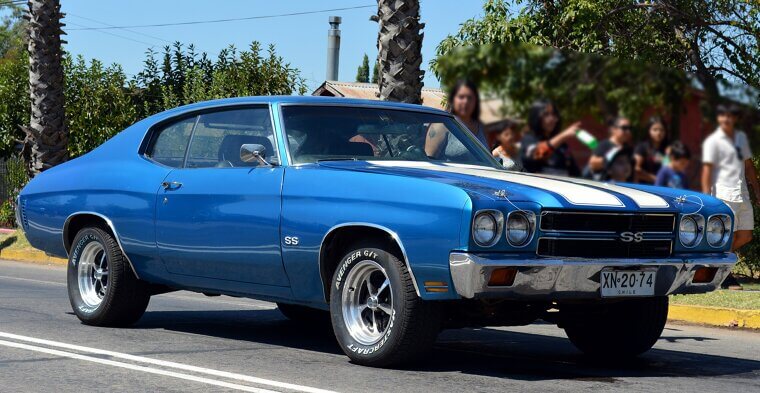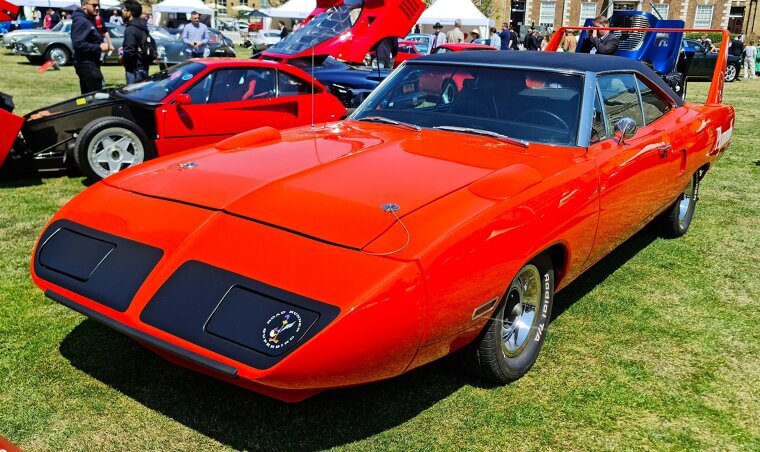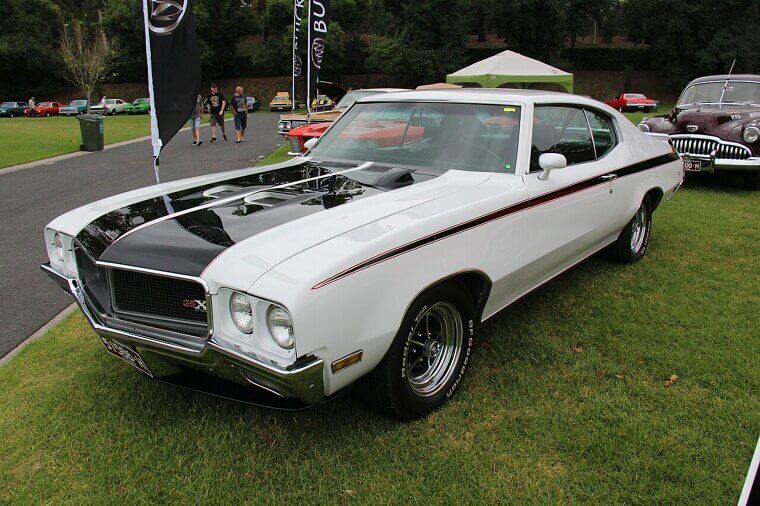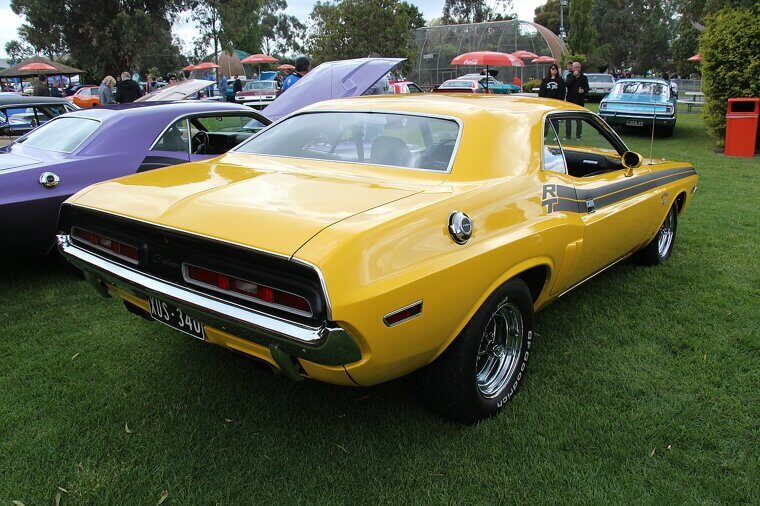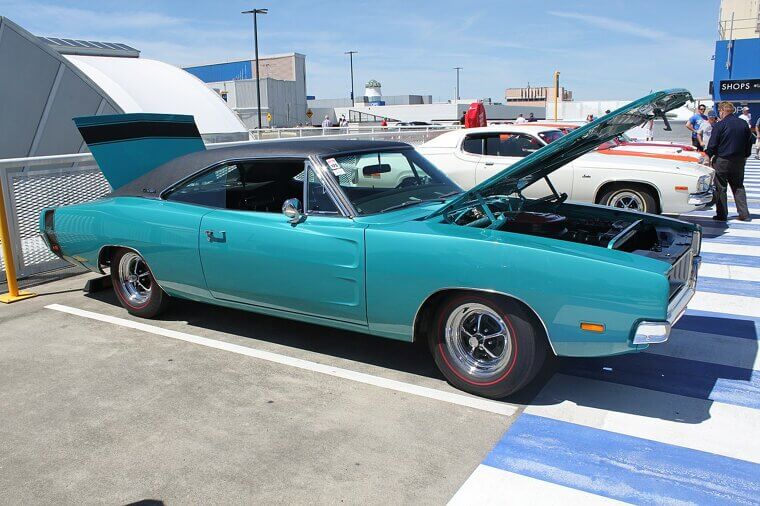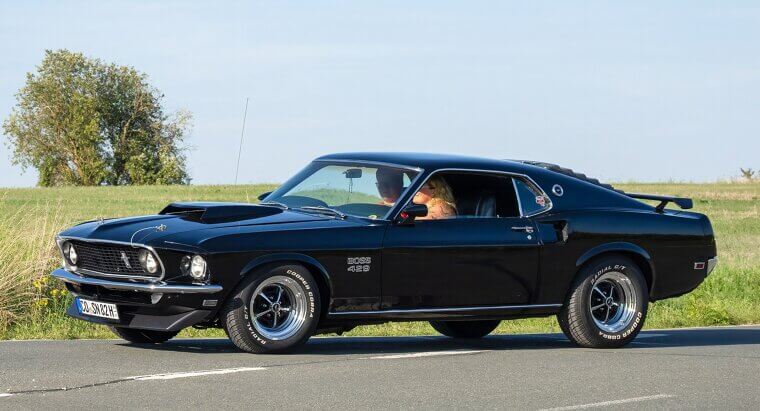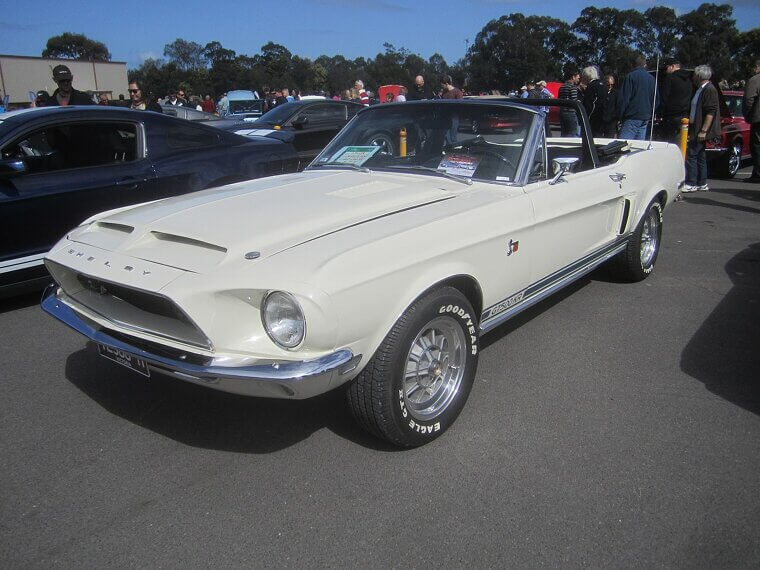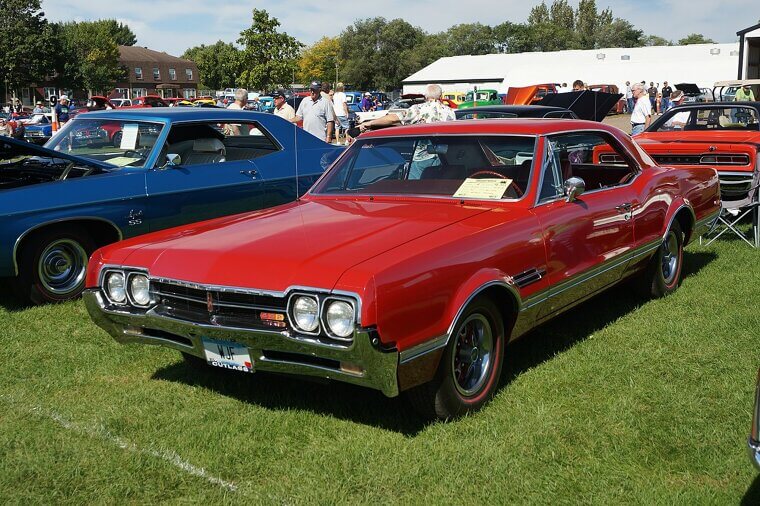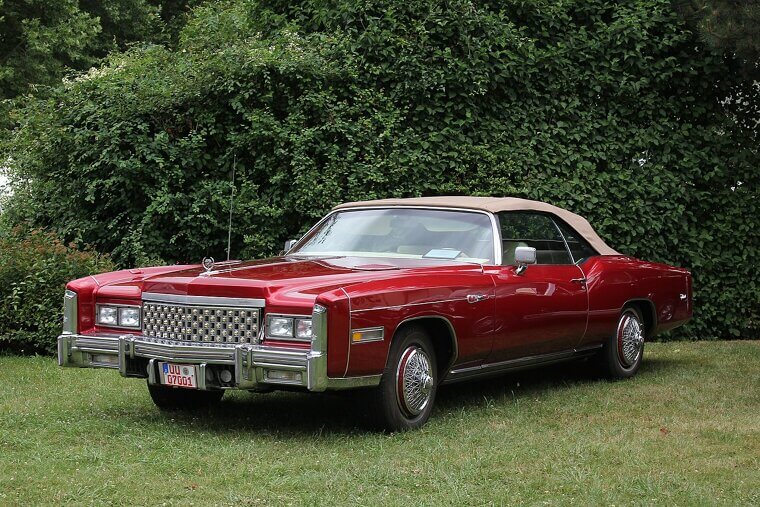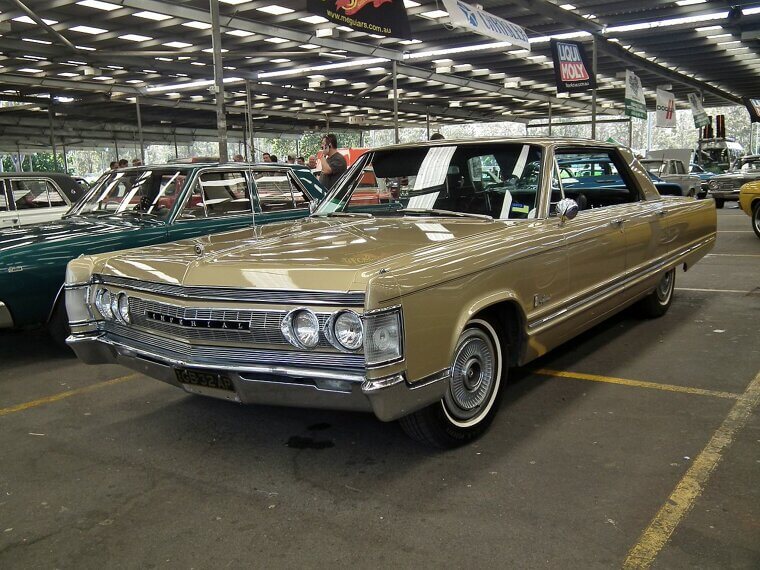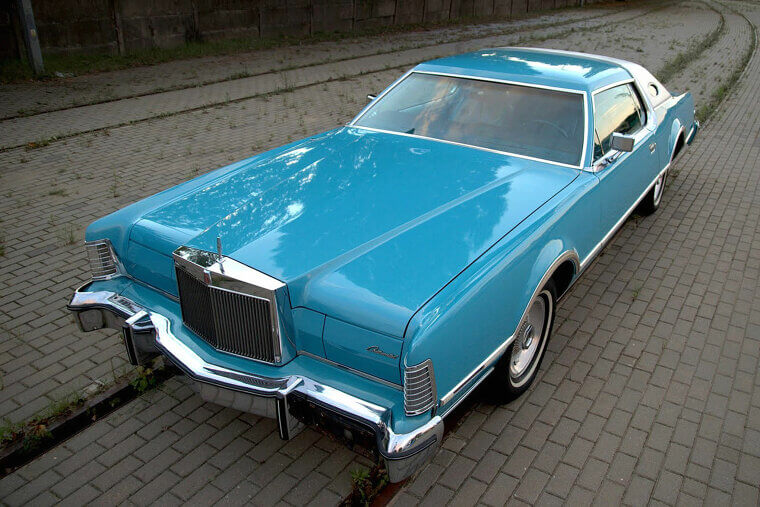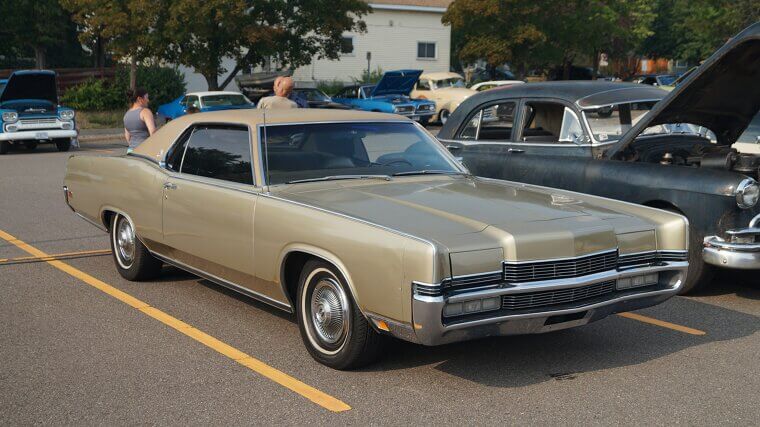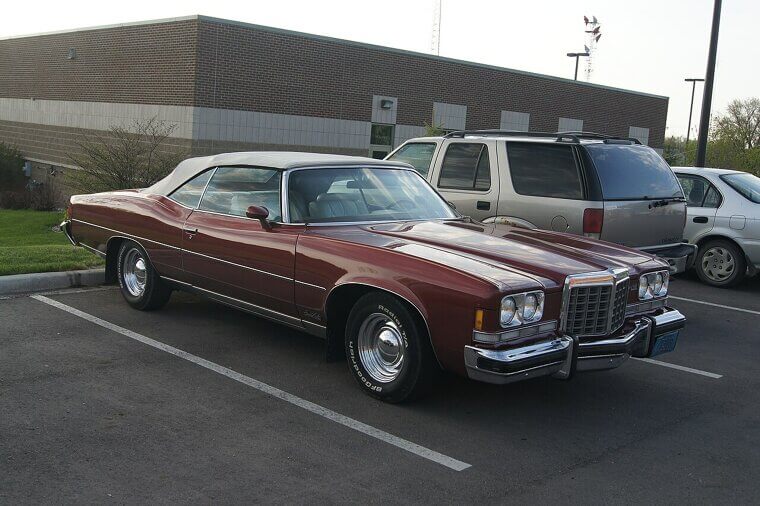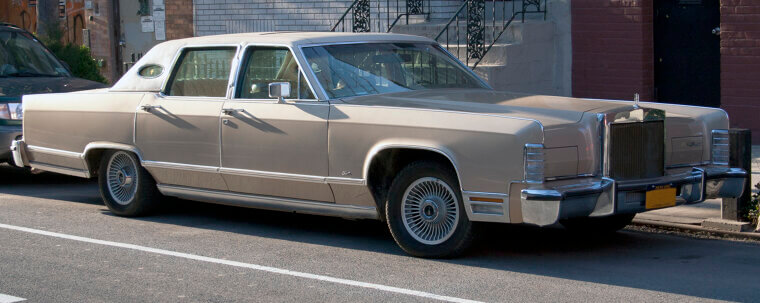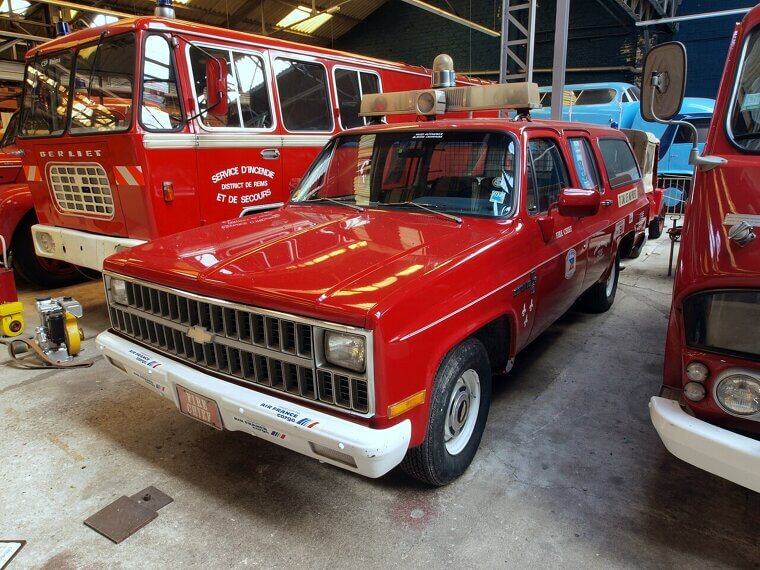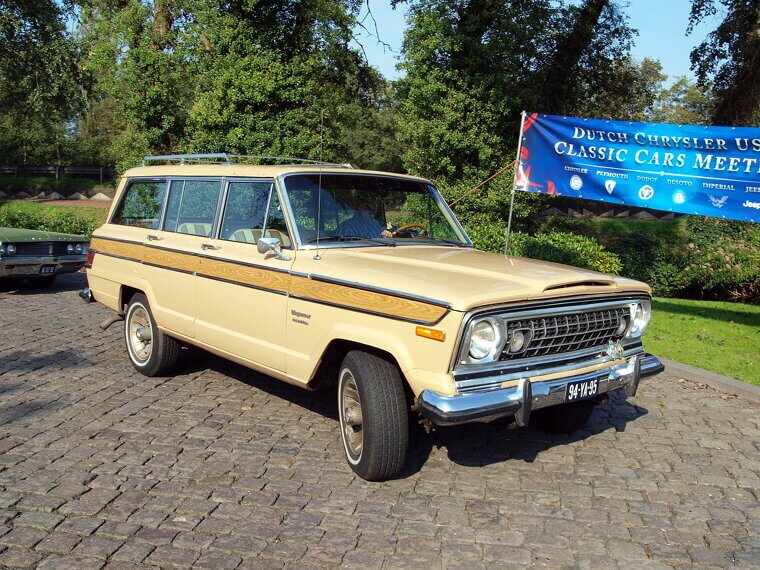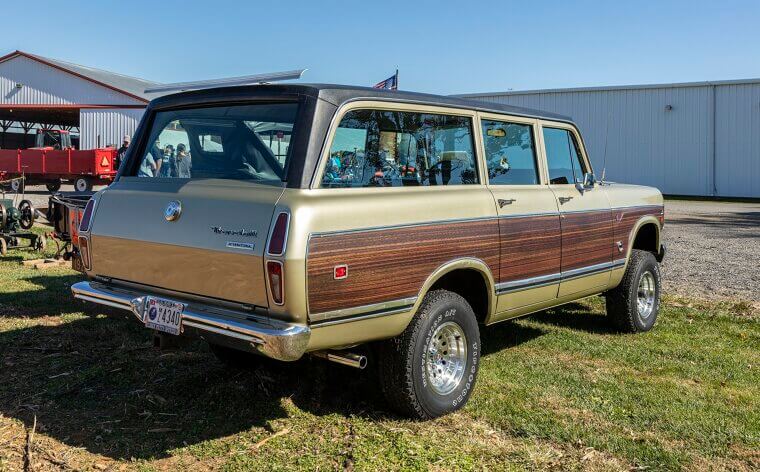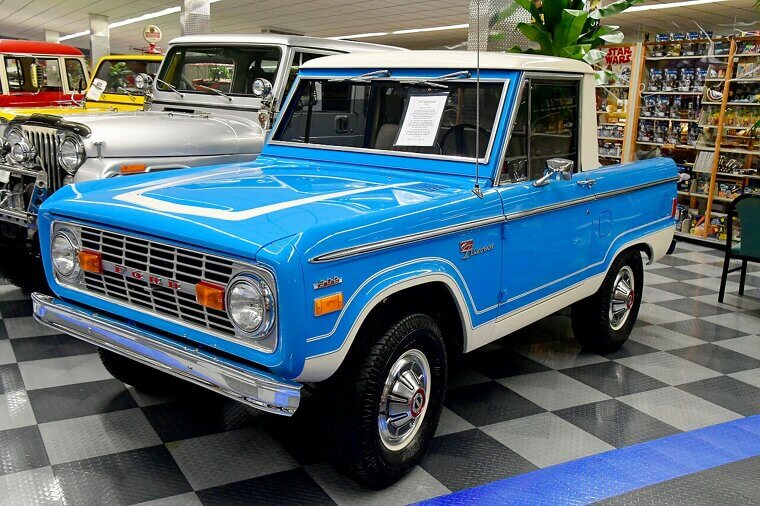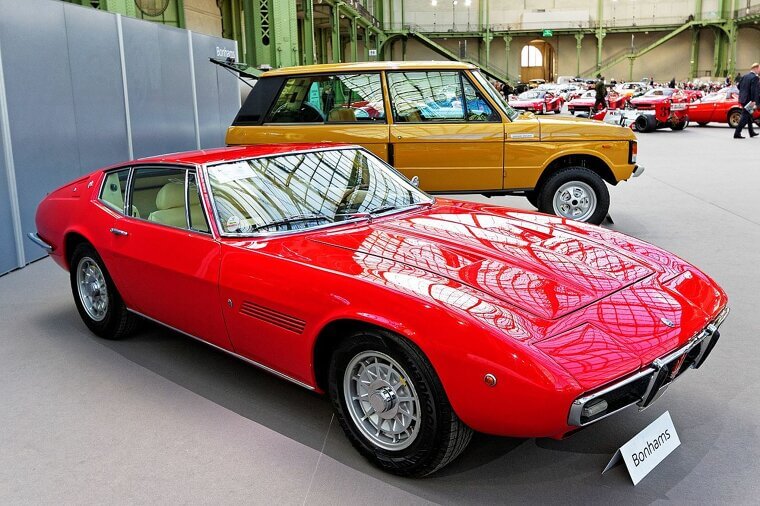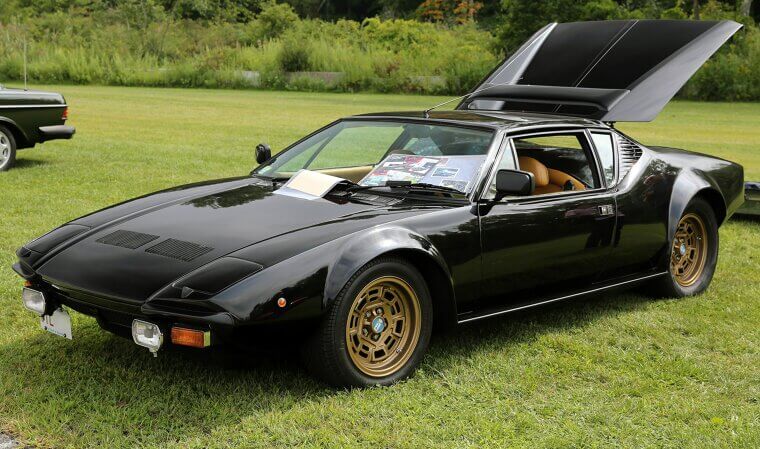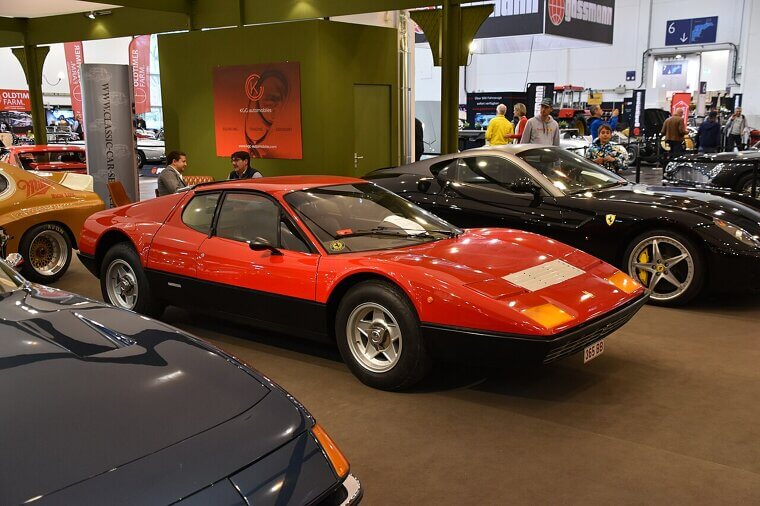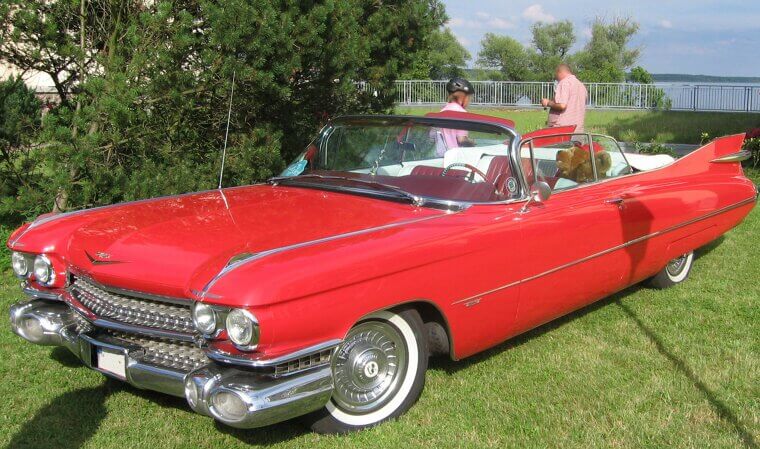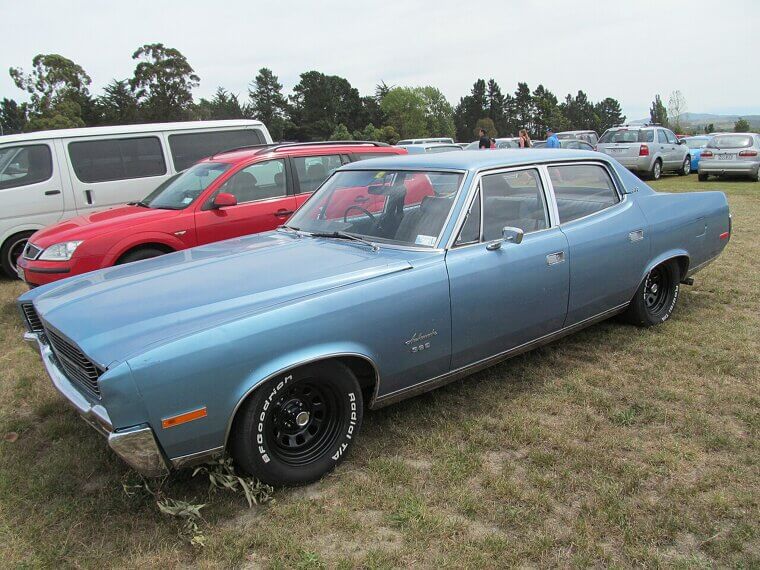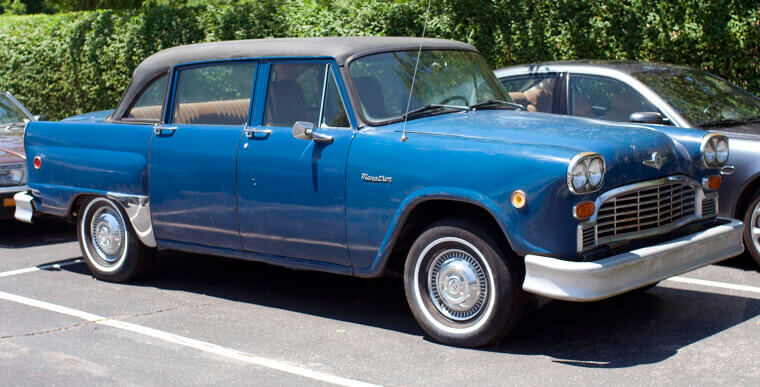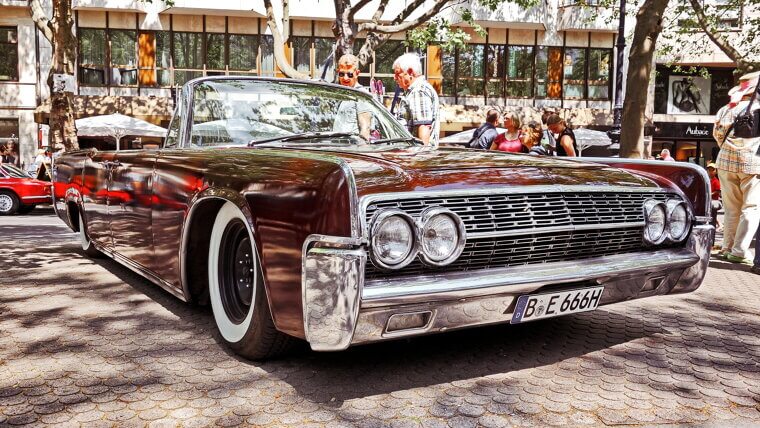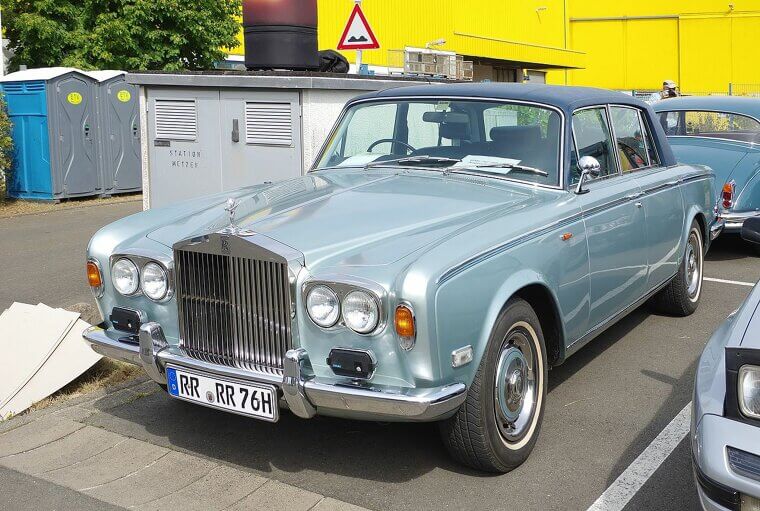1973 Chevrolet Camaro Z28
With all this talk of classic muscle cars, we’d be remiss not to include the Chevy Camaro. The Z28 model was part of the car’s second generation and was released in 1973, and led to a record increase in sales at the time. Despite their unmatched performance, these cars weren’t exactly economical when it came to fuel.
1970 Chevrolet Chevelle SS 454
The 1970 Chevrolet Chevelle SS 454 (which, for brevity’s sake, we’ll just refer to as the Chevy Chevelle) takes after its iconic predecessors in terms of styling and power. With a massive, roaring V8 engine under the hood, the Chevy Chevelle was clearly built for power, but not mileage.
1970 Plymouth Road Runner Superbird
Built specifically for racing, the Plymouth Superbird was a modified version of the Road Runner. It was noted for its sleek, aerodynamic design, and was a big success in 1970, its only year of production. It outperformed plenty of cars on the track, but was obviously meant for speed and power, given that its gas mileage was so low.
1970 Buick GSX Stage 1
Though the Mustang and Corvette are still the era’s most iconic muscle cars, plenty of others came along that would give them a run for their money. The Buick GSX was one such vehicle, a rip-roaring monster that could satisfy your power fantasy. Just don’t expect it to carry you for too long.
1971 Dodge Challenger R/T 426 HEMI
The Dodge Challenger R/T from 1971 was already highly sought after, but its 426 HEMI counterpart is even rarer. Only 71 HEMI Challengers left the factory floor and were designed to deliver astounding power… without much regard for mileage.
1969 Dodge Charger R/T 440
The Dodge Charger is another icon of the muscle car era, and the R/T 440 was one of its most popular models. It wasn’t as powerful as the 426 HEMI, but its affordability and easy maintenance made it a hit. That being said, its massive V8 engine was a real fuel guzzler.
1969 Ford Mustang Boss 429
The Boss 429 shares a lot in common with the Superbird. Both were designed specifically for NASCAR rally racing, and both were produced for a limited time. While the Boss 429 certainly delivered on performance and power, it had to sacrifice some practicality and fuel economy.
1970 Pontiac GTO Judge
The GTO Judge is one of the most audacious icons of the muscle car era. It was essentially a stripped-down Road Runner with a vibrant coat of paint - and some mean hardware under the hood. However, what it had in sheer unabashed power, it lacked in mileage and fuel economy.
1968 Shelby GT500KR
The KR in GT500KR stands for “King of the Road”, a title you’d better be able to back up if you’re in the manufacturing business. Fortunately, Shelby delivered, with a 428 Cobra Jet engine speculated to be able to produce 400 horsepower. Unfortunately, this meant its mileage was pretty low.
1966 Oldsmobile 442
Not every classic muscle car was going to dominate the roads, but they’re still deserving of our respect. The Oldsmobile 442, for instance, was a real gentleman’s muscle car - sleek, stylish, refined. However, it featured a triple-carb V8, which didn’t do much for its fuel economy.
1975 Cadillac Eldorado
The Cadillac Eldorado is emblematic of 70s excess. Driving one of these things meant that you had a wallet to match the size of your engine, which typically also meant that fuel economy wasn’t much of a worry for you. Indeed, though powerful, the Eldorado didn’t have great mileage.
1979 Chrysler New Yorker Brougham
Produced from 1940 until 1996, the New Yorker was Chrysler’s flagship model. The Brougham trim from the 70s epitomised the car’s luxurious status, and featured leather seats, fake wood panels, soft suspension, and poor fuel economy.
1967 Imperial Crown Coupe
Up until 1975, Imperial was its own brand before being assimilated into the Chrysler family. In those days, the Crown was a direct competitor to the Continental and the Fleetwood - an over-engineered, over-performing, ultra-smooth luxury land yacht. Naturally, this made it a terrible car to own if you were at all concerned about fuel economy.
1978 Ford Thunderbird
The ‘78 Thunderbird came at the height of the disco scene, when excess and style ruled the day. As such, these cars weren’t built for speed - they were built to be cool, classy, and smooth. But taking these on a long trip meant you’d need to have a pretty big wallet to pay for fuel.
1976 Oldsmobile Ninety-Eight
With the 70s in full swing, Oldsmobile had to oblige the market with a luxury yacht of its own. And oblige they did! This one came at the height of the popularity of land yachts, before downsizing became a market focus. As such, don’t expect to get the most mileage.
1976 Lincoln Continental Mark IV
Lincoln’s answer to the Cadillac Eldorado, the Continental Mark IV, was one of the largest (and longest) luxury cars of the 70s. It weighed around 5,000 pounds and packed a chugging V8 engine under the hood - the perfect recipe for low fuel economy.
1973 Buick Riviera
The ‘73 Buick Riviera stood out due to its peculiar, distinct aesthetic. In an era dominated by luxury vehicles, the Riviera carved itself a space thanks to its “boat-tail” rear, which further emphasised the attitude it exuded. However, while it excelled at flamboyance, it floundered in terms of fuel economy.
1970 Mercury Marquis
The 1970 Mercury Marquis shared some of its DNA with the Ford LTD, but was certainly a more upscale market option (and with a name derived from French nobility, it kind of had to be). However, it didn’t offer much in terms of gas mileage, despite a super smooth, comfortable drive.
1974 Pontiac Grand Ville
The 1974 Pontiac Grand Ville sat at the very top of Pontiac’s offerings during the time it was produced. It offered supreme luxury and smooth performance to those who weren’t quite willing to step up to a Cadillac just yet. However, it wasn’t exactly noted for offering the best fuel mileage.
1979 Lincoln Town Car
It seems fitting to end off our section on luxury sedans with the 1979 Lincoln Town Car, the last car to be produced before the era of downsizing. It epitomised all the excess and bravado that had come before - and that included a low MPG rating.
1978 Chevrolet Suburban
Nowadays, Chevrolet SUVs are the domain of the soccer parent, but back in the day, the ‘78 Suburban was a no-nonsense, heavy-duty powerhouse that could fit your entire extended family in its trunk. Okay, that may be hyperbolic, but we’re not exaggerating when we say that its fuel economy was horrendous.
1976 Jeep Wagoneer
The term “luxury SUV” hadn’t been coined yet in 1976, but if it had, the Jeep Wagoneer would certainly fit the bill. Surprisingly stylish and comfortable, it lives on as a legend of the SUV world today - but that’s probably not due to its low MPG rating.
1973 International Harvester Travelall
An underrated gem of the early SUV world, the 1973 International Harvester Travelall descended from a distinguished line of heavy-duty trucks built for towing and hauling with enough room to spare. Just don’t expect to take you very far on a single tank of gas.
1977 Ford Bronco
Arguably one of the most iconic SUVs of all time, the 1977 Ford Bronco was the final model in the first-generation Bronco. It could handle rough terrain with ease while remaining fairly agile for a vehicle of its size. Of course, that meant that it absolutely guzzled fuel like nobody’s business.
1979 Dodge Ramcharger
The Ramcharger was Dodge’s answer to the Bronco, and was clearly built to match that car’s toughness and off-road handling. Of course, it also took after the Bronco in terms of fuel economy, i.e., exceptionally poor.
1974 Lamborghini Countach LP400
The ‘74 Countach LP400 pretty much single-handedly set the standard for modern supercars, redefining everything that came before and after with its scissor doors and sleek design. However, it drank fuel the way fish drink water.
1970 Maserati Ghibli SS
An elegant combination of both power and style, the SS model was the very best of the Ghibli series. A grand tourer in every sense of the word, it drank fuel at racing rates.
1978 De Tomaso Pantera
The Pantera represents the combination of Italian style and American engineering. It was as powerful as it was luxurious, but that also made it heavy on fuel consumption.
1973 Ferrari 365 GT4 BB
Of course, on a list like this, the Ferrari name was bound to come up. The 1973 Ferrari 365 GT4 BB marked a shift in Ferrari’s design philosophy, moving the company into the modern world. It would take some time for them to get their fuel economy down, though.
1976 Aston Martin Lagonda
The L in “Lagonda” may as well stand for legendary at this point, since this car appears on our lists so frequently. Its bold, futuristic design has made it a real collector’s item at this point, but we can’t say much for how it handled its fuel economy.
1959 Cadillac Series 62
The ‘59 Cadillac Series 62 predicted the period of excess that would come later with its bold stylings and luxurious performance. It had poor fuel economy, however, so one couldn’t expect it to go very far on a full tank.
1970 AMC Ambassador
Although it wasn’t the most luxurious offering to come out of the 70s, the AMC Ambassador had something else going for it: affordability. And all the money you saved on your initial purchase could be spent on gas to keep it running.
1974 Checker Marathon
An oddball on our list, the 1974 Checker Marathon wasn’t known as a private vehicle. Instead, it became the official cab car for New York City. Funnily enough, however, it wasn’t particularly economical with its fuel.
1963 Lincoln Continental
The ‘63 Continental was the last of the fourth-generation Continentals to be released, and is still an icon of that era to this day. Of course, that era wasn’t known for fuel economy.
1976 Rolls-Royce Silver Shadow
The ‘76 Silver Shadow ushered Rolls-Royce into the modern era. It combined the old school charm with evolved engineering to deliver a truly special luxury car. That being said, it couldn’t get you very far on a single tank.


